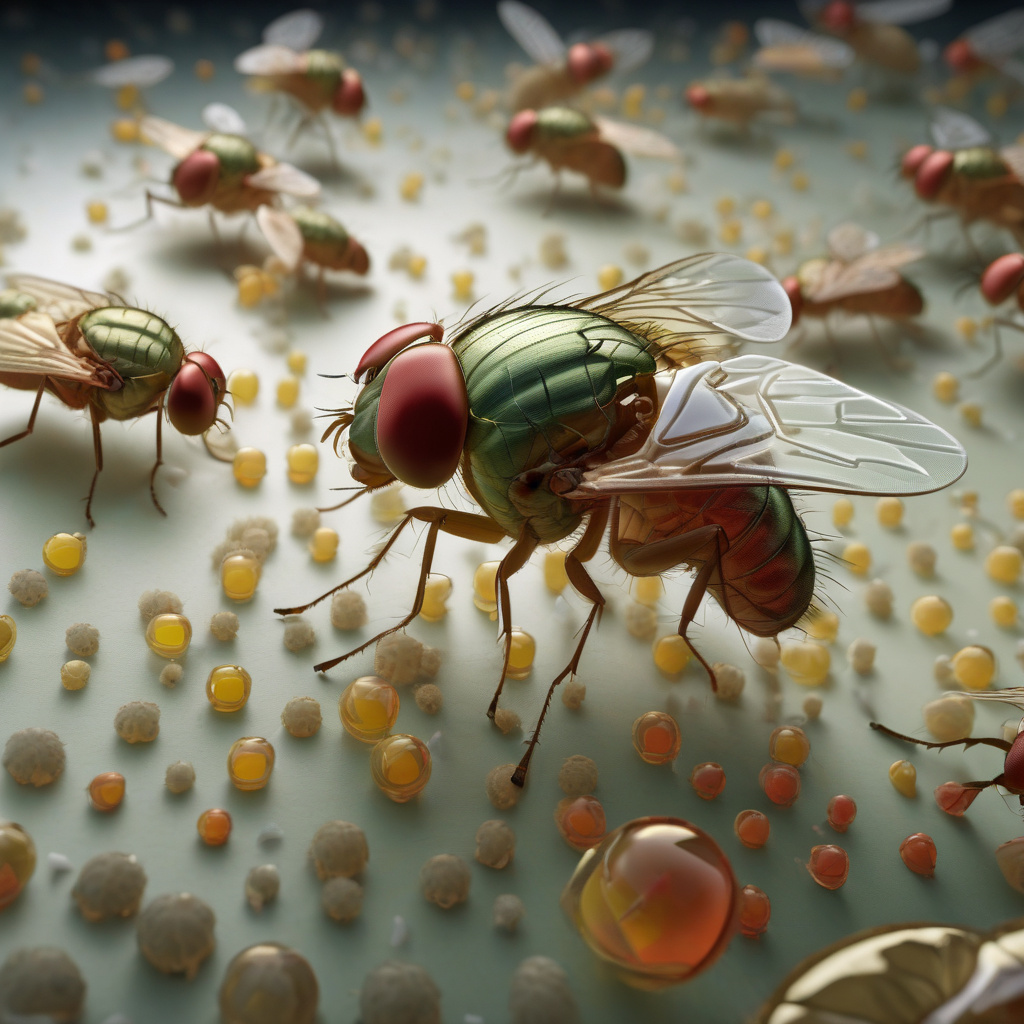How the Fly Brain Filters Out Visual Information Rhythmically During Sleep to Stay Up: A Fascinating Study
Researchers in a new study zoomed in on the function of sleep using a common fruit fly model and made a remarkable discovery about how the fly brain filters out visual information rhythmically during sleep to stay alert. This finding sheds light on the intricate mechanisms of sleep and wakefulness, offering insights into the unique ways different species regulate their sleep patterns.
The study, conducted by a team of scientists at the University of Oxford, focused on understanding how the fly brain processes sensory information during sleep. By using advanced imaging techniques, the researchers were able to observe the activity of individual neurons in the fly brain while the insects were asleep. What they found was truly intriguing.
During sleep, the fly brain exhibited a rhythmic pattern of filtering out visual information. This means that even while the flies were in a restful state, their brains were actively screening and processing visual stimuli, potentially to remain vigilant to external threats or opportunities. This unique mechanism highlights the sophisticated nature of the fly brain and its ability to adapt to its environment even during periods of rest.
Moreover, the researchers discovered that this rhythmic filtering of visual information was crucial for the flies to maintain a state of readiness during sleep. By selectively processing certain visual cues while ignoring others, the fly brain could prioritize relevant information and respond swiftly to potential dangers. This adaptive strategy mirrors the complex sensory processing mechanisms observed in higher organisms, suggesting that even simple organisms like fruit flies have evolved sophisticated ways to navigate their environment.
The implications of this study are far-reaching, extending beyond the realm of basic research on insect behavior. Understanding how the fly brain filters sensory information during sleep could have significant implications for studying human sleep disorders and cognitive function. By uncovering the fundamental principles governing sleep regulation in a model organism like the fruit fly, scientists can gain valuable insights into the universal principles of brain function and behavior.
In conclusion, the study on how the fly brain filters out visual information rhythmically during sleep offers a glimpse into the intricate world of sleep regulation and sensory processing. The findings underscore the remarkable adaptability and complexity of even the simplest of brains, challenging our understanding of sleep and cognition. As research in this field progresses, we can expect to unravel more mysteries of the sleeping brain and unlock the secrets of our own consciousness.
#FlyBrain, #SleepRegulation, #SensoryProcessing, #BrainFunction, #ResearchInsights












